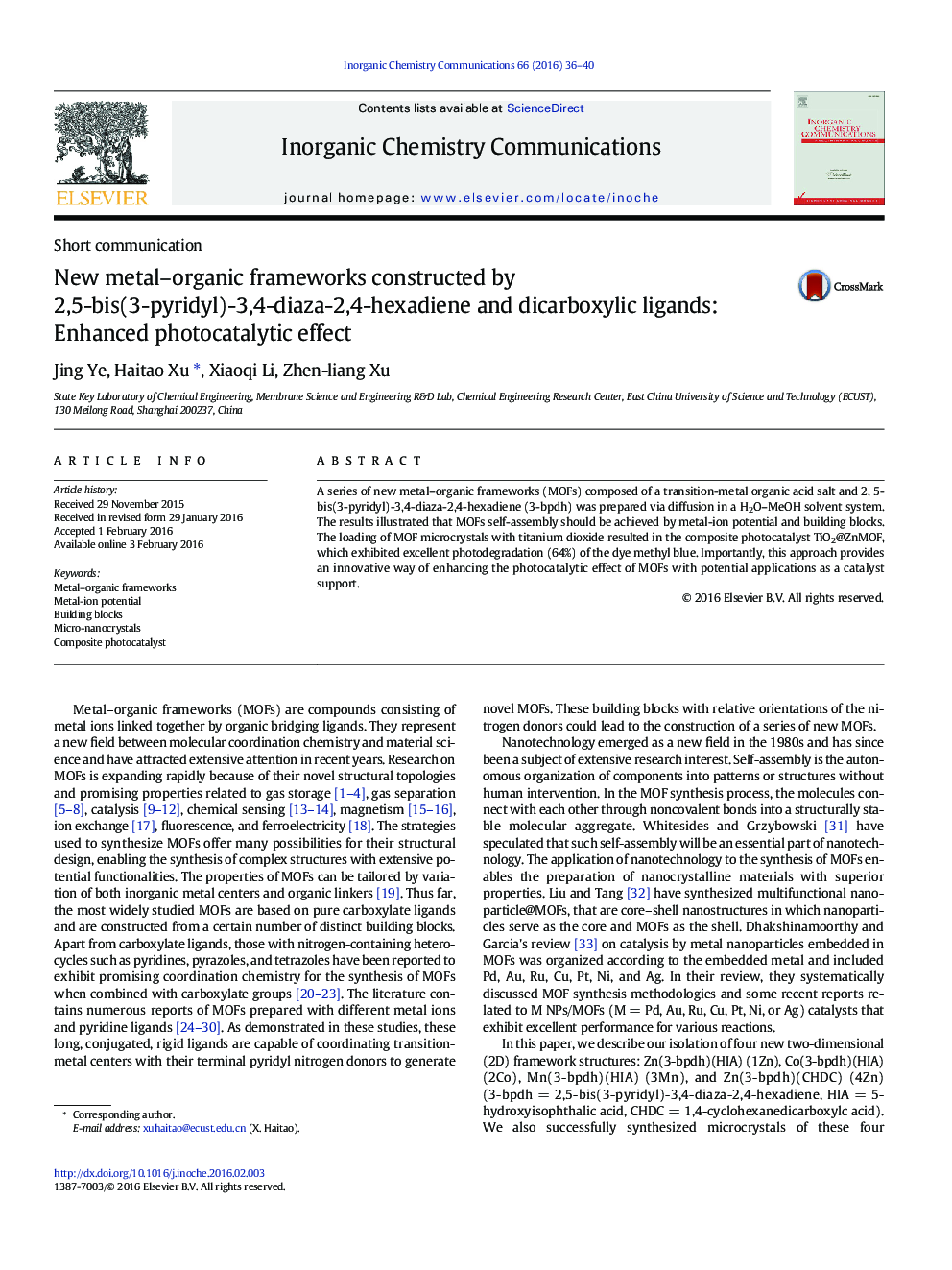| Article ID | Journal | Published Year | Pages | File Type |
|---|---|---|---|---|
| 1305283 | Inorganic Chemistry Communications | 2016 | 5 Pages |
•Synthesis and structure of a series of new metal–organic frameworks•MOFs should be achieved by metal-ion potential and building blocks.•Enhancing the photocatalytic effect of the dye methyl blue a catalyst support
A series of new metal–organic frameworks (MOFs) composed of a transition-metal organic acid salt and 2, 5-bis(3-pyridyl)-3,4-diaza-2,4-hexadiene (3-bpdh) was prepared via diffusion in a H2O–MeOH solvent system. The results illustrated that MOFs self-assembly should be achieved by metal-ion potential and building blocks. The loading of MOF microcrystals with titanium dioxide resulted in the composite photocatalyst TiO2@ZnMOF, which exhibited excellent photodegradation (64%) of the dye methyl blue. Importantly, this approach provides an innovative way of enhancing the photocatalytic effect of MOFs with potential applications as a catalyst support.
Graphical abstractA series of new metal–organic frameworks (MOFs) composed of a transition-metal organic acid salt and 2, 5-bis(3-pyridyl)-3,4-diaza-2,4-hexadiene (3-bpdh) was achieved by metal-ion potential and building blocks. The loading of MOF microcrystals with titanium dioxide exhibited excellent photodegradation of the dye methyl blue.Figure optionsDownload full-size imageDownload as PowerPoint slide
